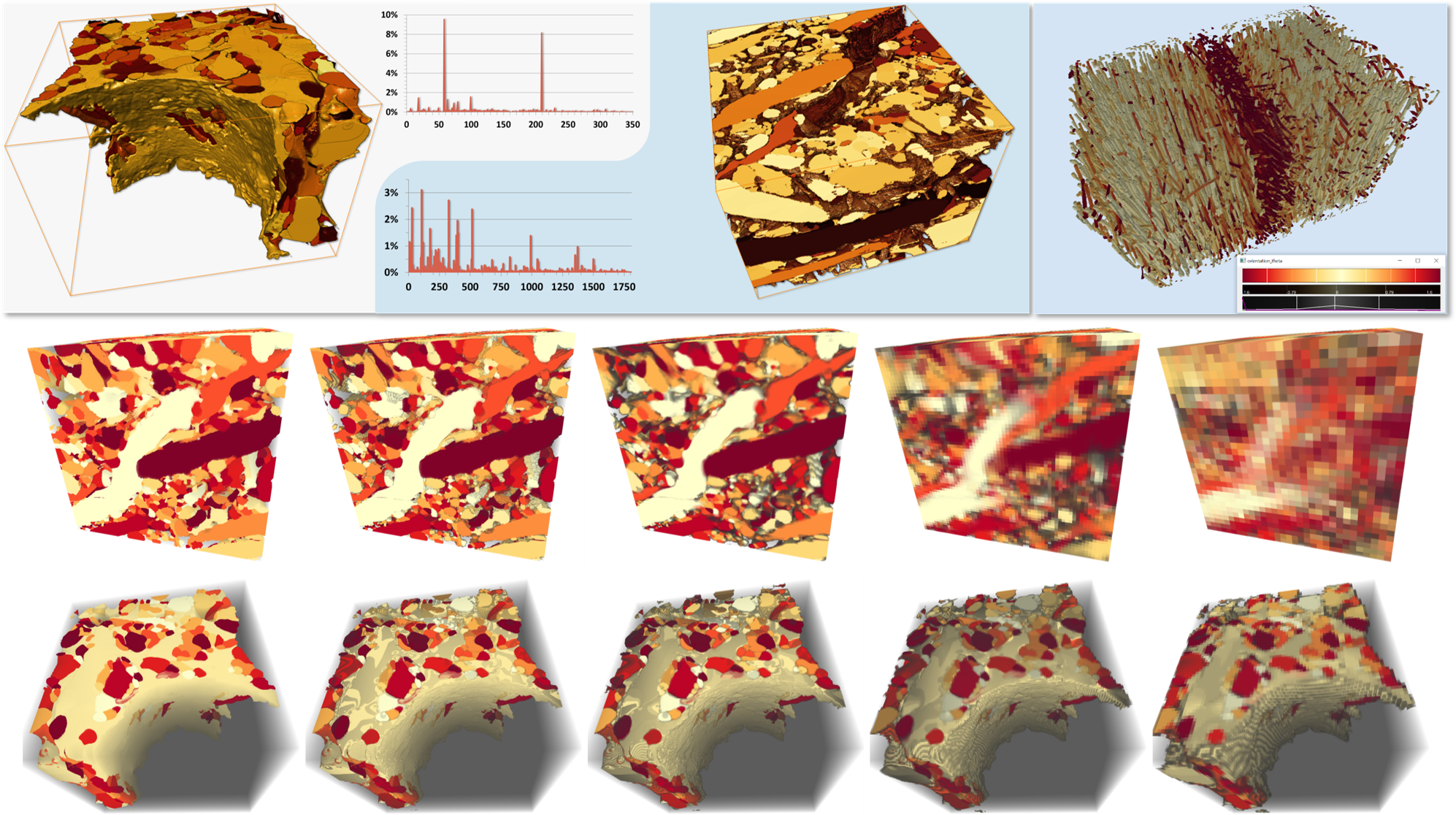The Mixture Graph - A Data Structure for Compressing, Rendering, and Querying Segmentation Histograms
Khaled Al-Thelaya, Marco Agus, Jens Schneider
External link (DOI)
View presentation:2020-10-30T17:15:00ZGMT-0600Change your timezone on the schedule page
2020-10-30T17:15:00Z

Fast forward
Direct link to video on YouTube: https://youtu.be/1VpQPj17w7M
Keywords
Segmented Volumes, Data Structures, Sparse Data
Abstract
In this paper, we present a novel data structure, called the Mixture Graph. This data structure allows us to compress, render, and query segmentation histograms. Such histograms arise when building a mipmap of a volume containing segmentation IDs. Each voxel in the histogram mipmap contains a convex combination (mixture) of segmentation IDs. Each mixture represents the distribution of IDs in the respective voxel's children. Our method factorizes these mixtures into a series of linear interpolations between exactly two segmentation IDs. The result is represented as a directed acyclic graph (DAG) whose nodes are topologically ordered. Pruning replicate nodes in the tree followed by compression allows us to store the resulting data structure efficiently. During rendering, transfer functions are propagated from sources (leafs) through the DAG to allow for efficient, pre-filtered rendering at interactive frame rates. Assembly of histogram contributions across the footprint of a given volume allows us to efficiently query partial histograms, achieving up to 178x speed-up over naive parallelized range queries. Additionally, we apply the Mixture Graph to compute correctly pre-filtered volume lighting and to interactively explore segments based on shape, geometry, and orientation using multi-dimensional transfer functions.